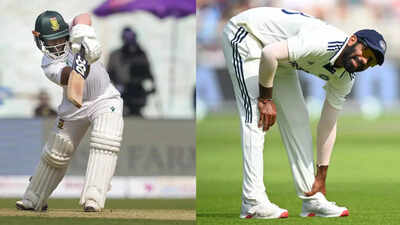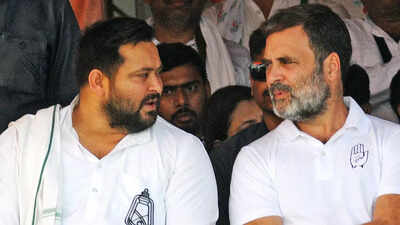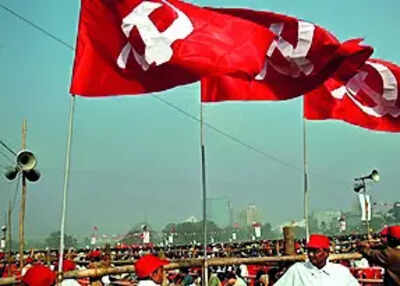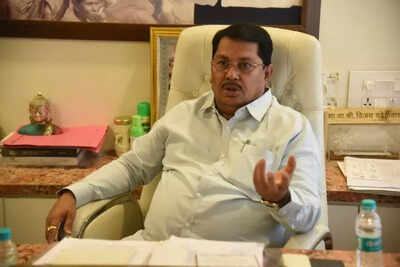Bihar election results: Rahul Gandhi walked 1,300 km but Congress still went downhill | India News – The Times of India

1,300 kilometres, 25 districts, 110 seats. Rahul Gandhi marched through Bihar echoing “vote chor, gaddi chhod,” but voters clearly took a different route – straight to the polling booth, but away from him. The gamcha, the Bhojpuri, the makhana, the fishing and the bike rides – the Nehru-Gandhi scion threw in every flavour of Bihari charm he could muster. But the performance fell flat. Once again, his attempt to slip into the state’s cultural skin didn’t quite land, and the Congress now finds itself staring at one of its bleakest showings, with the party struggling to even hit double digits.
Back in 2020, Congress bagged 27 of 70 seats, a 38% strike rate. This time, the slide has only steepened. Despite hammering national narratives, the party’s messaging was drowned out by local realities that it failed to read, let alone ride.
Why Voter Adhikar Yatra failed to garner votes for Congress?
The Voter Adhikar Yatra began with strong crowds and genuine enthusiasm, briefly hinting at a revival for the Congress. But as the campaign moved forward, that initial spark faded. The party leaned too heavily on the yatra’s symbolism while offering little sustained presence on the ground. With only scattered appearances from senior leaders, Congress couldn’t maintain momentum or build a deeper connection with voters.This slowdown was worsened by the MGB’s internal rifts and muddled coordination. Resentment within the RJD, confused candidate choices, and weak organisational synergy blunted whatever gains the yatra had created. At the same time, shifting local dynamics, such as the BSP’s rise and the NDA’s strategic recalibration, cut further into Congress’s appeal. In the end, local realities overpowered the early hype, leaving the yatra unable to pull voters towards the party.
The road well walked: Three yatras, one message
Rahul Gandhi’s three nationwide yatras — Bharat Jodo (2022–23), Bharat Jodo Nyay (2024), and Vote Adhikar (2025) — were crafted to reposition him as a people’s politician. Each march carried a distinct political thesis: the first called for unity against divisive politics, the second championed justice through caste census and welfare, and the third sought to reform electoral practices and mobilize allies under the Mahagathbandhan banner.While the yatras succeeded in transforming Rahul’s image from a detached leader to an engaged campaigner, they also revealed the limits of symbolic politics. They revived enthusiasm among cadres and built narrative energy, but translating that emotional momentum into votes has remained elusive.
The high points: South and the hills
If the yatras gave Rahul a platform, victories in Himachal Pradesh, Karnataka, and Telangana gave him proof of concept. In Himachal, the Congress’s return to power followed a textbook anti-incumbency swing backed by the Old Pension Scheme. In Karnataka, anti-corruption sentiment and strong local leadership under Siddaramaiah and DK Shivakumar delivered a resounding 136-seat win. And in Telangana, Revanth Reddy’s aggressive campaign unseated KCR after a decade in power.These wins established Congress as a southern powerhouse and briefly revived its national narrative. The results helped restore morale, re-energize its workers, and suggested that Rahul’s “connect with the people” strategy could still pay dividends — at least in states with strong regional leaders and disciplined organization.
The flat roads: Hindi heartland woes
Beyond those isolated victories, Congress’s struggles in the Hindi belt continue. Despite a promising 2024 Lok Sabha performance, the 2025 assembly results in Haryana, Maharashtra, Madhya Pradesh, Rajasthan, and Delhi exposed deep organizational decay. In Haryana, the Congress came agonizingly close but fell short due to factionalism and lack of a decisive local face. In Maharashtra, alliance fatigue within the MVA cost it dearly. In Madhya Pradesh and Rajasthan, BJP’s disciplined machinery and Modi’s enduring appeal crushed Congress’s hopes. And in Delhi, the party failed yet again to open its account.The only exception was Jharkhand, where the Congress-JMM alliance retained power by focusing on welfare delivery and regional identity politics — proof that Congress still performs best when piggybacking on strong local allies.
Walking, talking, but still searching
Rahul Gandhi’s press conferences over the past year, from alleging “vote chori” in Haryana to calling out “hydrogen bomb” voter fraud, have ensured constant media attention. But critics argue that they’ve done little to change electoral outcomes. His messaging resonates with idealists, yet Congress’s electoral machinery remains sluggish, fragmented, and overly dependent on his charisma.Five years, three yatras, and multiple campaigns later, Rahul has successfully crafted a new moral vocabulary for Indian politics — but not yet a winning formula. His journey across India has earned him empathy and visibility, but politics demands more than footprints and soundbites. Unless Congress learns to turn Rahul’s moral momentum into organizational muscle, his yatras may remain grand spectacles of purpose without political payoff.




